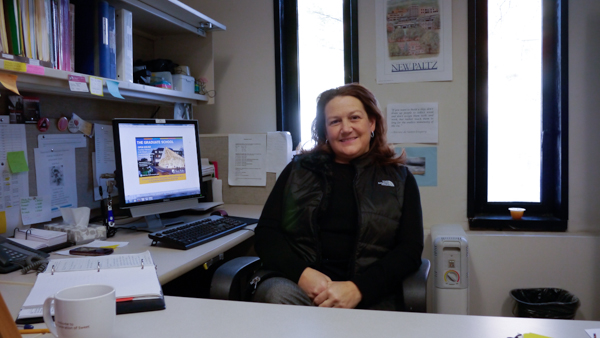

Students of the Communication Disorders Department engaged in a “six hour silence” experiment which had them interact with others in ways other than speech for upwards of six hours.
The goal of the experiment was for students studying speech pathology to see how those who cannot communicate vocally go about their daily lives using alternative means of communication.
The project also helped students be able to empathize with their clients, according to Alisa Frankfurter, a first-year graduate student in the Communication Disorders program who took part in the experiment.
Frankfurter said there were approximately 25 students who participated. It was the first required informal project for the graduate class titled “Augmentative and Alternative Communication” taught by Professor Andrea Abramovich.
The requirements of the project were simple: the participants could not communicate using speech for six hours and the participants had to communicate with a close friend or family member as well as with someone they did not know, Frankfurter said.
Some forms of communication that could be used included: pen and paper, texting and other technological means that can be used for communication. Some devices from the clinic on campus were also made available.
Frankfurter chose to use an iPad for communication and downloaded two different speech processors for free on the App Store. One was a basic text-to-speech program, similar to what Stephen Hawking sounds like. The second had a more human-like female voice.
Frankfurter said doing the simple task of placing an order at McDonald’s was enough to cause anxiety.
“I put so much preparation into making sure everything was ready for when I ordered. Then I realized that the environment was too loud for the cashier to hear my device and had to show him the message,” Frankfurter said. “I was so flustered and felt so rushed that I ended up just not ordering anything else besides a burger. I left feeling like I didn’t get what I really wanted to begin with.”
Wendy Bower, chair of the Communication Disorders Department addressed the broad meaning of the word communication.
“Speech is a motor process. If you have all of your cognitive abilities but not the physical ability to speak, what do you do? You find alternate ways to send messages,” Bower said.
Experiments like the one Frankfurter participated in are a way to draw awareness to what clients who deal with a variety of cognitive and motor disorders go through, according to Bower.
“It’s easy to just give someone a pen and paper and tell them ‘ok, now go out and communicate’ but when put into action you realize just how much human interaction is altered,” Frankfurter said.
Bower also listed music, art and dance as other means of expression besides speaking. She also noted that technological advances are a huge help including a variety of different communication boards and phone apps that can be downloaded.
“It makes us much more aware of what our clients face and helps us counsel them better so that what we practice in the therapy room is functional to their everyday life,” Bower said
